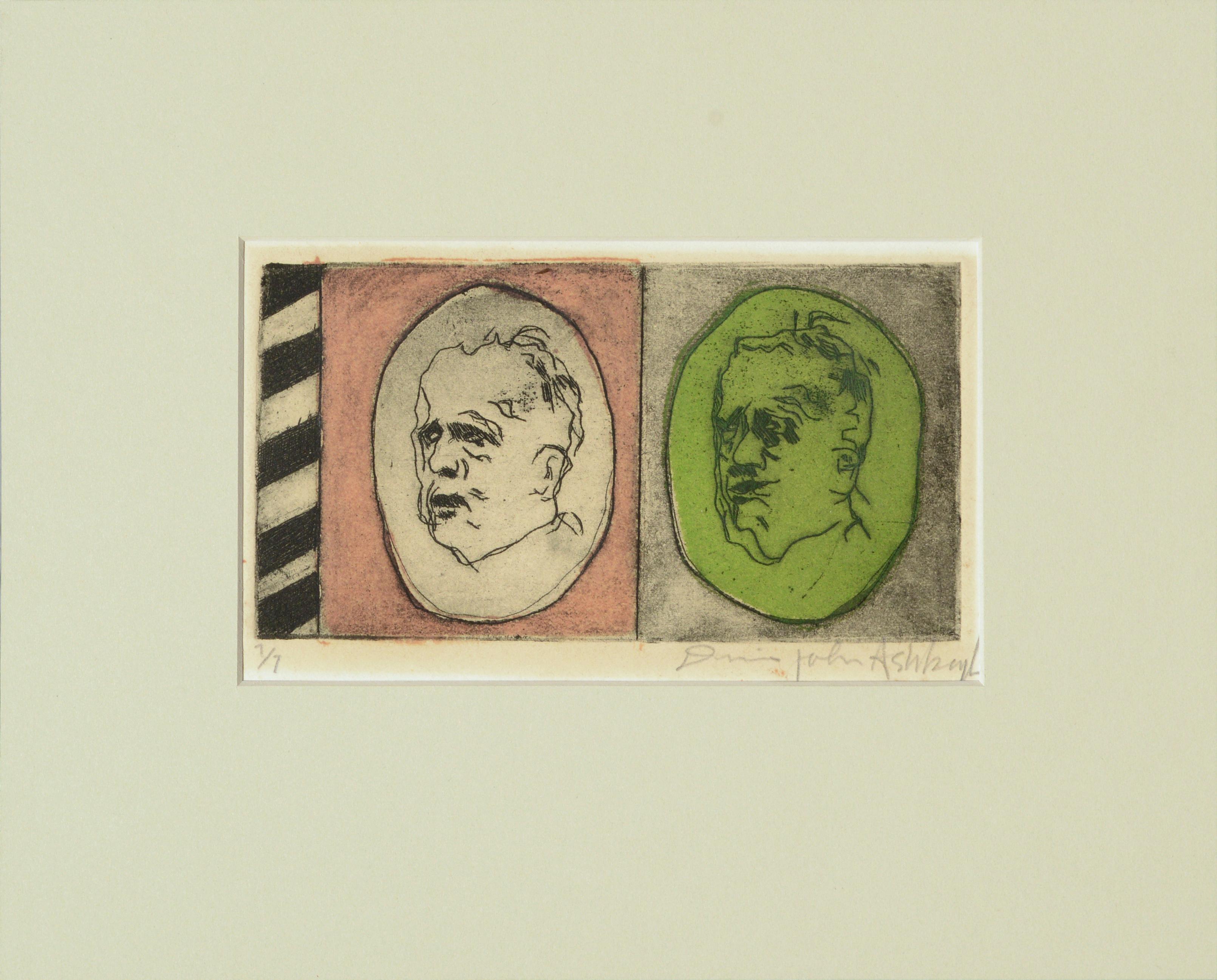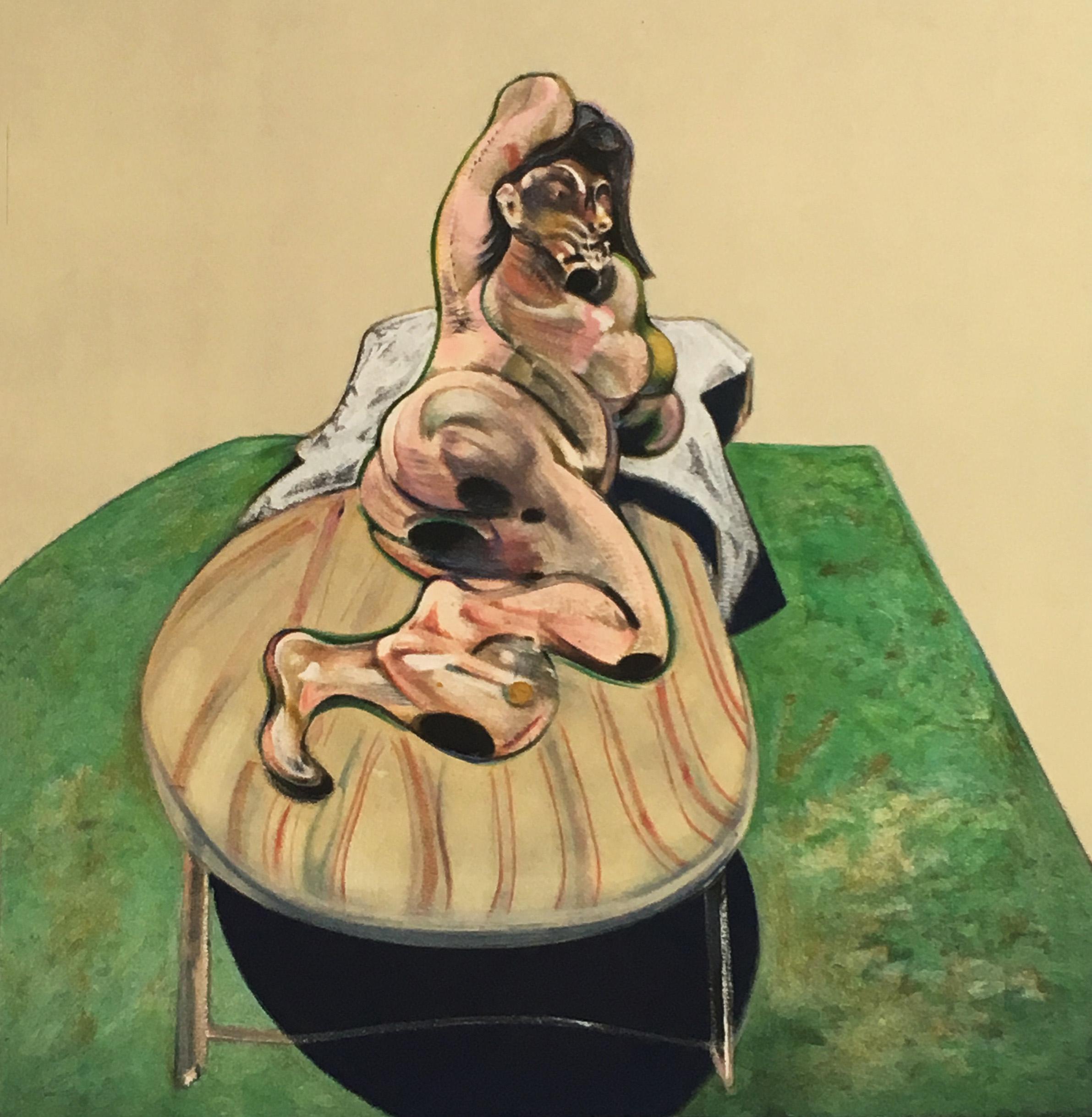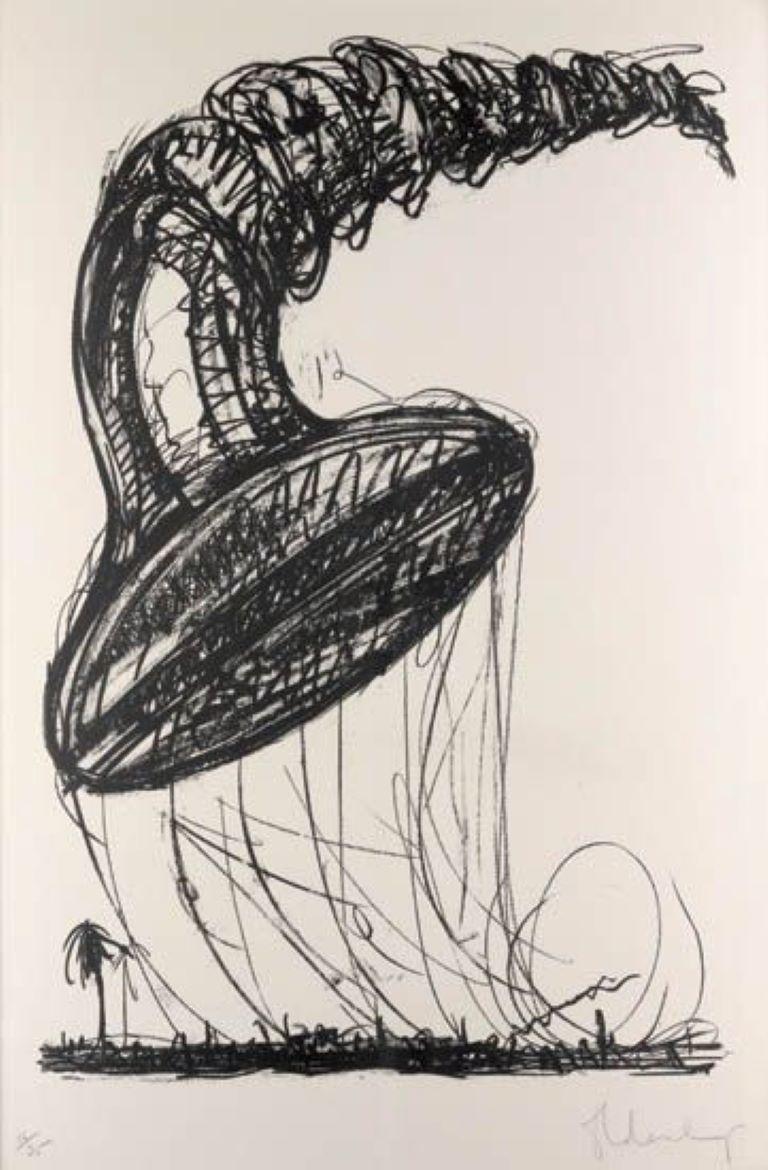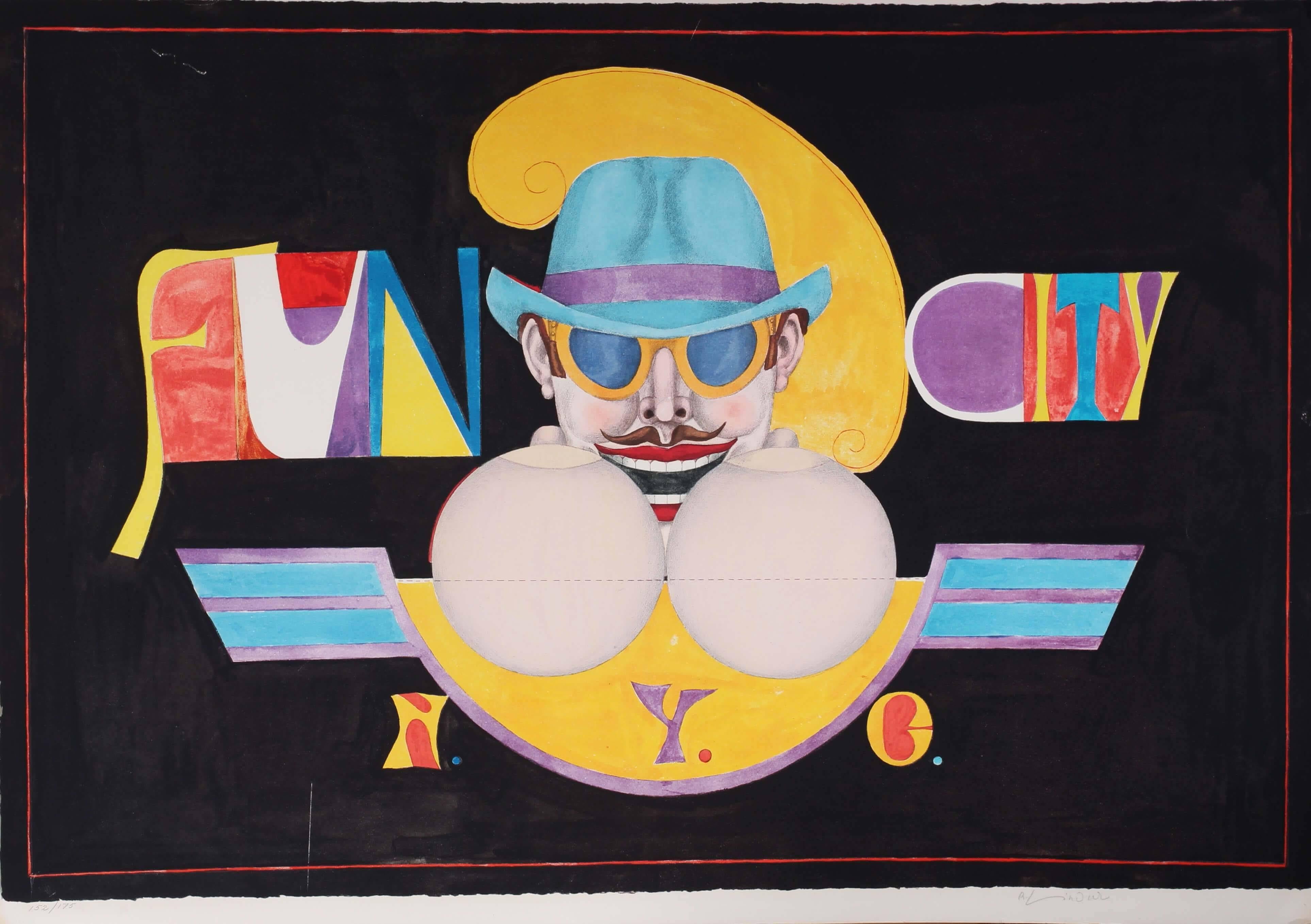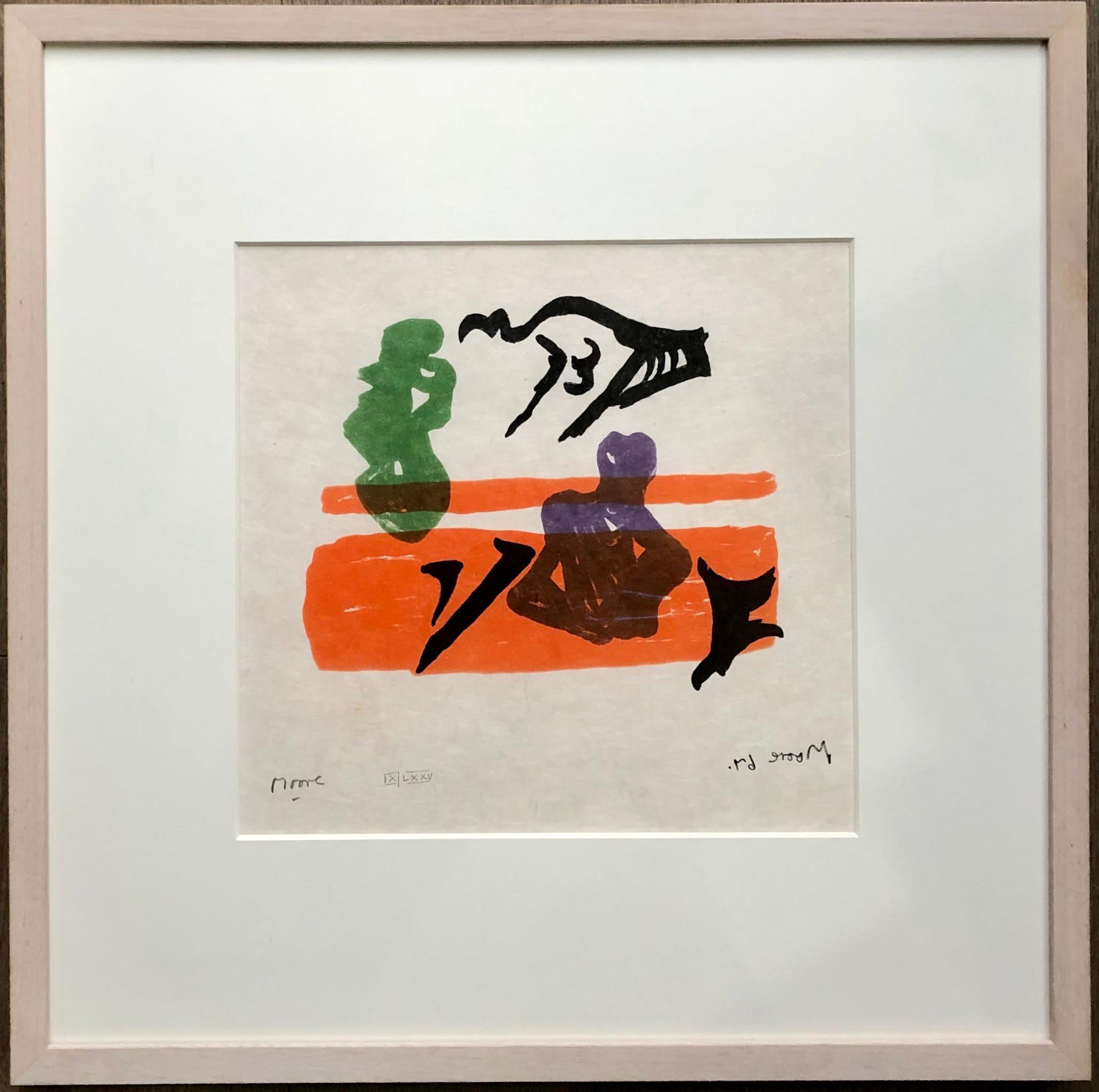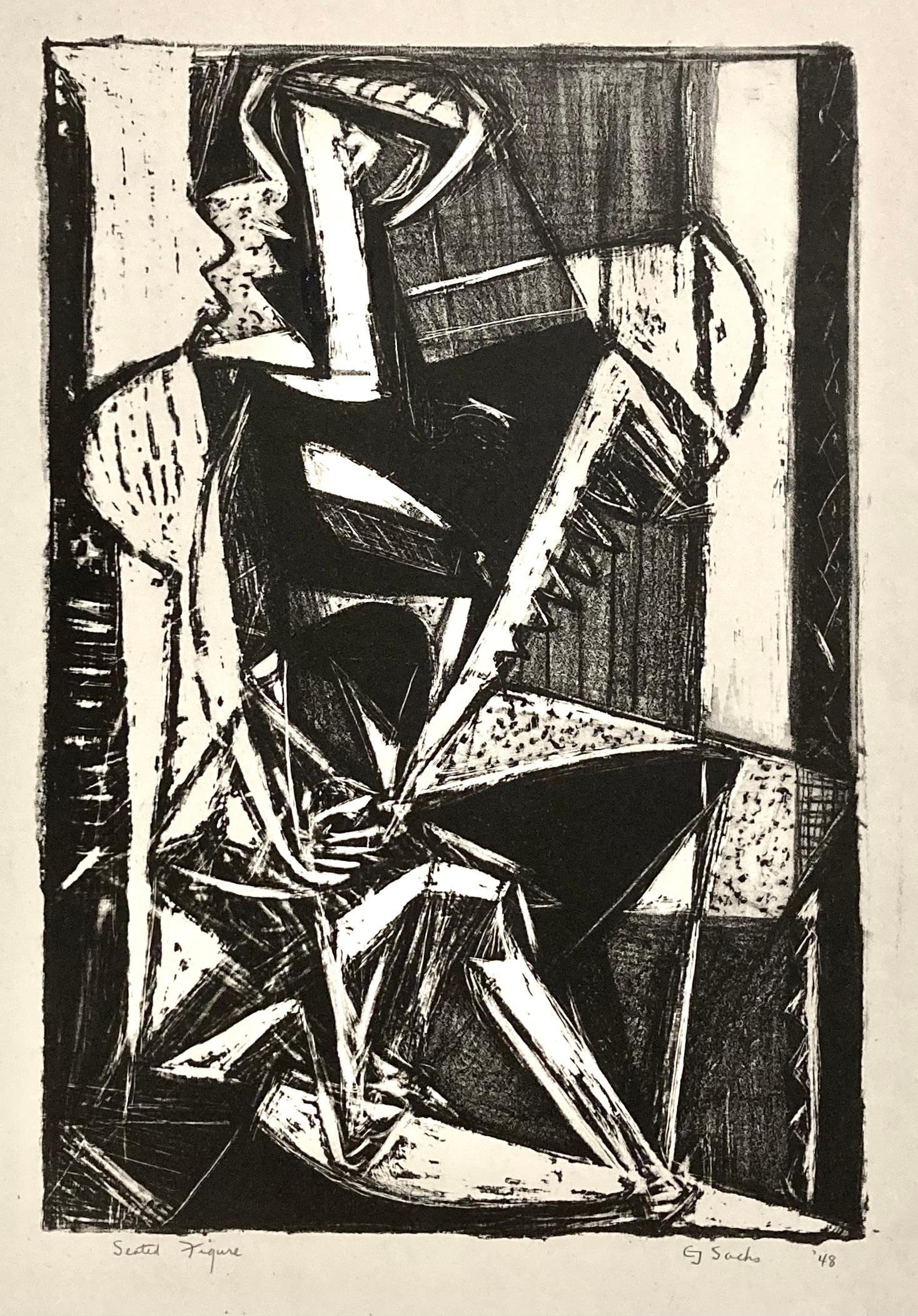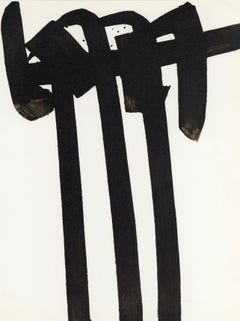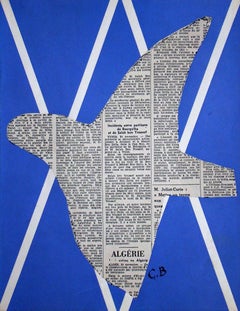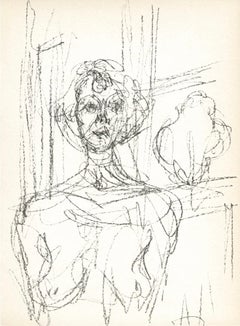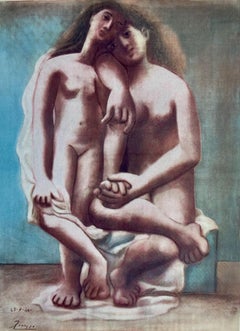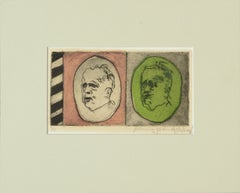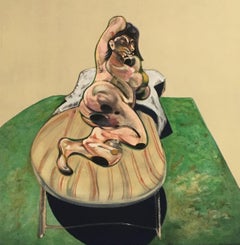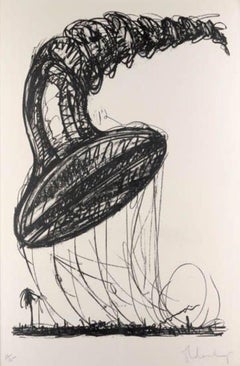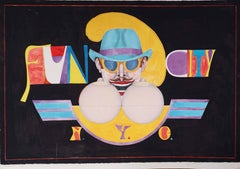Items Similar to Léger, Les instruments de la Passion, Derrière le miroir (after)
Want more images or videos?
Request additional images or videos from the seller
1 of 9
Léger, Les instruments de la Passion, Derrière le miroir (after)1951
1951
About the Item
Lithograph on vélin paper. Inscription: Unsigned and unnumbered, as issued. Good condition, with centerfold, as issued. Notes: From Derrière le miroir, N° 36-37-38, 1951. Published by Aimé Maeght, Éditeur, Paris; printed by Éditions Pierre à Feu, Galerie Maeght, Paris. Excerpted from a Christie’s, New York lot essay, The life span of Derrière le Miroir was thirty-five years. Publication began in 1946. Aimé Maeght, initiator of Derrière le Miroir, had already made few attempts to start publications illustrated with fine printed lithographs in colours in the years prior to the launch of Derrière le Miroir. The name, Derrière le Miroir was suggested by Jacques Kober, manager of Galerie Maeght. The gallery had opened in 1945; the first number of Derrière le Miroir was released a year later. For this first issue Geer van Velde was invited to create lithographs to illustrate the publication. The lithographs in the first issue was printed by Mourlot, Paris. The first three issues of Derrière le Miroir were unsuccessful for Maeght as far as the edition size—the initial print-runs were far too large. From 30,000 for the first issue, the number was taken down to 10,000 for numbers two and three, until Derrière le Miroir number four was published in an edition of 1500. Maeght instituted a policy whereby unsold issues were recycled and used for the fabrication of new paper for the coming editions—this served to both conserve resources and also usually result in ultimate edition sizes far less than 1,500. With number four, the permanent format for Derrière le Miroir was established. Lithographs in colours were key; text was limited to comments on the featuring artist's exhibition taking place in the Galerie Maeght, and this catalogue format was defining to Derrière le Miroir. Galerie Maeght took on the leading role in Paris and presented all main artists including Braque, Matisse, Chagall, Léger, Bonnard, Chillida and many more. So too did Derrière le Miroir. The idea of a magazine was meanwhile still on the mind of Aimé Maeght. He found an insert as a solution. Two, and later four, pages of art review were inserted from 1952 onwards. In 1968 this find had ripened to independency and the dream of Aimé Maeght was now a tangible fact named l'Art vivant. Derrière le Miroir was on it's own again. Over 250 issues in a row. At that point publisher Aimé Maeght wished to make a mark with the publication of an hommage to all who once contributed to the magazine which came in the form of issue number 250, but was delayed by the death of Aimé Maeght. It was published after number 253 in 1982 and became a tribute to Aimé and Marguérite Maeght and 35 years of friendship with artists and poets. The era of Derrière le Miroir was closed with that final publication.
FERNAND LEGER (1881-1955) was a French painter, sculptor, and filmmaker. In his early works he created a personal form of cubism (known as "tubism") which he gradually modified into a more figurative, populist style. His boldly simplified treatment of modern subject matter has caused him to be regarded as a forerunner of pop art. Léger was born in Argentan, Orne, Lower Normandy, where his father raised cattle. Fernand Léger initially trained as an architect from 1897 to 1899, before moving in 1900 to Paris, where he supported himself as an architectural draftsman. After military service in Versailles, Yvelines, in 1902–1903, he enrolled at the School of Decorative Arts after his application to the École des Beaux-Arts was rejected. He nevertheless attended the Beaux-Arts as a non-enrolled student, spending what he described as "three empty and useless years" studying with Gérôme and others, while also studying at the Académie Julian. He began to work seriously as a painter only at the age of 25. At this point his work showed the influence of impressionism, as seen in Le Jardin de ma mère (My Mother's Garden) of 1905, one of the few paintings from this period that he did not later destroy. A new emphasis on drawing and geometry appeared in Léger's work after he saw the Cézanne retrospective at the Salon d'Automne in 1907. In 1909, he moved to Montparnasse and met Alexander Archipenko, Jacques Lipchitz, Marc Chagall, Joseph Csaky and Robert Delaunay. In 1910, he exhibited at the Salon d'Automne in the same room (salle VIII) as Jean Metzinger and Henri Le Fauconnier. In his major painting of this period, Nudes in the Forest, Léger displays a personal form of Cubism that his critics termed "Tubism" for its emphasis on cylindrical forms. In 1911, the hanging committee of the Salon des Indépendants placed together the painters identified as 'Cubists'. Metzinger, Albert Gleizes, Le Fauconnier, Delaunay and Léger were responsible for revealing Cubism to the general public for the first time as an organized group. The following year he again exhibited at the Salon d'Automne and Indépendants with the Cubists, and joined with several artists, including Le Fauconnier, Metzinger, Gleizes, Francis Picabia and the Duchamp brothers, Jacques Villon, Raymond Duchamp-Villon and Marcel Duchamp to form the Puteaux Group—also called the Section d'Or (The Golden Section) paintings, from then until 1914, became increasingly abstract. Their tubular, conical, and cubed forms are laconically rendered in rough patches of primary colors plus green, black and white, as seen in the series of paintings with the title Contrasting Forms. Léger made no use of the collage technique pioneered by Braque and Picasso.
- Creation Year:1951
- Dimensions:Height: 15 in (38.1 cm)Width: 22 in (55.88 cm)
- Medium:
- Movement & Style:
- After:Fernand Léger (1881-1955, French)
- Period:
- Condition:
- Gallery Location:Auburn Hills, MI
- Reference Number:1stDibs: LU1465214004432
About the Seller
4.9
Platinum Seller
Premium sellers with a 4.7+ rating and 24-hour response times
Established in 1978
1stDibs seller since 2021
1,075 sales on 1stDibs
Typical response time: <1 hour
- ShippingRetrieving quote...Shipping from: Auburn Hills, MI
- Return Policy
Authenticity Guarantee
In the unlikely event there’s an issue with an item’s authenticity, contact us within 1 year for a full refund. DetailsMoney-Back Guarantee
If your item is not as described, is damaged in transit, or does not arrive, contact us within 7 days for a full refund. Details24-Hour Cancellation
You have a 24-hour grace period in which to reconsider your purchase, with no questions asked.Vetted Professional Sellers
Our world-class sellers must adhere to strict standards for service and quality, maintaining the integrity of our listings.Price-Match Guarantee
If you find that a seller listed the same item for a lower price elsewhere, we’ll match it.Trusted Global Delivery
Our best-in-class carrier network provides specialized shipping options worldwide, including custom delivery.More From This Seller
View AllSoulages, Composition, XXe Siècle (after)
By Pierre Soulages
Located in Auburn Hills, MI
Lithograph on vélin paper. Unsigned and unnumbered, as issued. Good condition. Notes: From the volume, XXe Siècle, vol. n°34, 1970. Published and printed under the direction of Gualt...
Category
1970s Modern Figurative Prints
Materials
Lithograph
Braque, Papier collé, XXe Siècle (after)
By Georges Braque
Located in Auburn Hills, MI
Lithograph on vélin paper. Inscription: Unsigned and unnumbered, as issued. Good condition. Notes: From the volume, XXe Siècle, vol. n°6, 1956. Published and printed under the direct...
Category
1950s Modern Figurative Prints
Materials
Lithograph
Giacometti, Annette, Prints from the Mourlot Press (after)
By Alberto Giacometti
Located in Auburn Hills, MI
Lithograph on vélin d'Arches paper. Unsigned and unnumbered, as issued. Good condition. Notes: From the album, Prints from the Mourlot Press, 1964. Published by Fernand Mourlot, Par...
Category
1960s Modern Abstract Prints
Materials
Lithograph
Picasso, Two Nudes, Picasso: Fifteen Drawings (after)
By Pablo Picasso
Located in Auburn Hills, MI
Lithograph and stencil on vélin paper. Unsigned and unnumbered, as issued. Good Condition. Notes: From the folio, Picasso: Fifteen Drawings, 1946. Published by Pantheon Books, Inc., New York; rendered and printed by Albert Carman, City Island...
Category
1940s Modern Abstract Prints
Materials
Lithograph, Stencil
Beckmann, Composition (Hofmaier 323-329), Der Mensch ist kein Haustier (after)
By Max Beckmann
Located in Auburn Hills, MI
Lithograph on Van Gelder Zonen Bütten paper. Inscription: Unsigned and unnumbered, as issued. Good condition. Notes: From the volume, Der Mensch ist kein Haustier, 1937. Published by...
Category
1930s Modern Figurative Prints
Materials
Lithograph
$1,036 Sale Price
58% Off
Free Shipping
Hartung, Composition, XXe Siècle (after)
By Hans Hartung
Located in Auburn Hills, MI
Lithograph on vélin paper. Inscription: Unsigned and unnumbered, as issued. Good condition. Notes: From the volume, XXe Siècle, vol. n°12, 1959. Published and printed under the direc...
Category
1950s Modern Figurative Prints
Materials
Lithograph
You May Also Like
Two Faces, Modern Self-Portrait Lithograph of the Artist Aging in Pink & Green
By Dennis John Ashbaugh
Located in Soquel, CA
Limited edition hand signed lithograph featuring two consecutive modern portraits of faces with varying degrees of abstraction, in pink and green, by Dennis john Ashbaugh (American, b. 1946). Numbered "7/7" in the lower-left corner. Signed "Dennis John Ashbaugh" in the lower right corner. Presented in a new tan mat with foam core backing. Unframe. Image size: 4"H x 6.75"W. Some toning yellowing at mat opening.
Dennis John Ashbaugh (American, b. 1946) was born in Red Oak, Iowa, and attended California State University at Fullerton, receiving his MA in 1969. Ashbaugh has spent most of his career in New York City.
In 1992, he collaborated with William Gibson, a fiction writer, and with publisher Kevin Begos on a book, Agrippa, meaning 'book of the dead'. Exhibition venues include the Metropolitan Museum of Art in New York City, the P.S.1 Contemporary Art Center, the Seattle Art Museum, and the Whitney Museum of American ArtPublic collections holding his work include the Hirshhorn Museum, the Museum of Fine Arts, Houston, the Los Angeles County Museum of Art, and the New York Metropolitan. He received a Guggenheim Fellowship.
Ashbaugh lives in a trim frame house in Flamingo Park...
Category
1970s Modern Figurative Prints
Materials
Paper, Ink, Lithograph
1960s Francis Bacon lithograph (from Bacon derrière le miroir)
By (after) Francis Bacon
Located in NEW YORK, NY
1960s Francis Bacon lithograph from Derrière le miroir:
Well-suited for matting & framing, this original 1960's print is derived from Bacon's ...
Category
1960s Modern Figurative Prints
Materials
Lithograph
Soft Screw as Balloon, Ascending
By Claes Oldenburg
Located in New York, NY
A very good impression of this lithograph on Arches Roll paper. Signed and numbered 25/35 in pencil, lower margin. Printed and published by Gemini G.E.L., Los Angeles, with the blind...
Category
1970s Modern Abstract Prints
Materials
Lithograph
1970's New York original lithograph by Richard Lindner
By Richard Lindner
Located in Petworth, West Sussex
A funky urban image from 1971 depicting some of the nuances of New York seedy underbelly. This original lithograph is number 73 of and edition of 75 from the 1971 'Fun City' suite. Originally there were 12 different artworks in this series by Richard Lindner of which this is the title piece.
Signed in pencil 'R Lindner...
Category
Late 20th Century Modern Figurative Prints
Materials
Lithograph
Violet Torso on Orange Stripes
By Henry Moore
Located in London, GB
Lithograph in four colours on Japon nacré paper
31 x 31 cm - framed
Edition of 75
Hand-signed and numbered by the artist
Henry Moore’s prints are a vital aspect of his artistic lega...
Category
1960s Modern Abstract Prints
Materials
Lithograph
Edward Sacks, Seated Figure
Located in New York, NY
Little is known about the artist, Edward (Ed) Sacks, although this print may have been made at the Art Students League in NYC.
it is a cross between, as the title suggests, a Seated ...
Category
1940s American Modern Figurative Prints
Materials
Lithograph
Recently Viewed
View AllMore Ways To Browse
Black Tub
Walkman Sony
Walter Henry Sweet Painting
Willem Botha
William Callow
Wizard Of Clay
Wizard Of Oz Plates
World War I Poster Black Tom
Wwii Chinese Poster
Y Gianni
Yoshitoshi Moon
Yuki Gray
Yukio Mishima
17th Century Japanese Wood Block Prints
17thc Century Flemish
1960s Andy Warhol Campbell Soup Dress
1963 Painting By Morris Katz
1983 Americas Cup Poster
